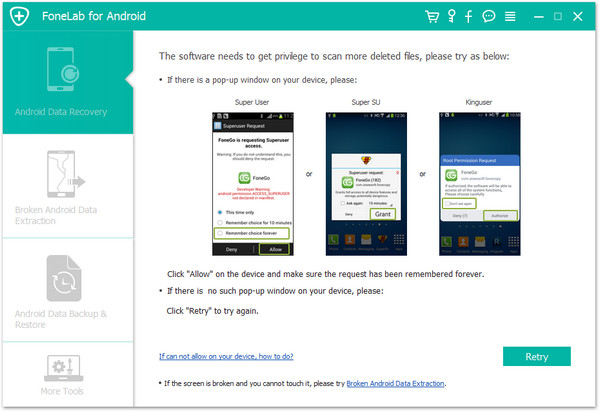iPhone Data Recovery
 Phone to Phone Transfer
Phone to Phone Transfer
The easy 1-Click phone to phone data transfer to move data between iOS/Android/WinPhone/Symbian
Restore-iPhone-Data Products Center

 Android Data Recovery
Android Data Recovery
The Easiest Android data recovery software to recover Android lost or deleted Files
 Phone Manager(TunesGo)
Phone Manager(TunesGo)
Best iOS/Android phone manager tool to manage your phone’s files in a comfortable place
 Phone to Phone Transfer
Phone to Phone Transfer
The easy 1-Click phone to phone data transfer to move data between iOS/Android/WinPhone/Symbian

iOS Toolkit
A full solution to recover, transfer, backup restore, erase data on iOS devices, as well as repair iOS system and unlock iPhone/iPad.

Android Toolkit
All-in-one Android Toolkit to recover, transfer, switch, backup restore, erase data on Android devices, as well as remove lock screen and root Android devices,especially Samsung phone.
[Summary]: This article describes how to use Android Data Recovery app to recover deleted contacts from Samsung Galaxy S10 easily, including other Samsung phones like Samsung Galaxy S9, S8, S7, S6, S5, A9, J7, Note 8, Note 5, etc.
“I made a mistake that I accidentally deleted a couple of business contacts that are very important for me. My phone is the latest Samsung Galaxy S10, and how can I restore deleted contacts on my Samsung Galaxy Note 9 phone?”
If contacts loss occurred on your Samsung Galaxy S10 phone for any reason such as accidentally deletion, formatting, factory reset, root, Android OS update, water-damaged, virus attack, then you have come to the right place. Here in this tutorial, we gonna help you to get back deleted contacts on Samsung Galaxy S10 as well as other items with just a few clicks on your mouse by using Android Data Recovery software.
Android Data Recovery is a professional Samsung Contact Recovery tool that aims to retrieve deleted contacts from Samsung Galaxy S10, S9, S8, S7, S6, S5, Note 8, Note 5, Note 4, Galaxy Tab and so forth. Besides, other items like text messages, photos, videos, call logs, music, WhatsApp chat history and documents are all recoverable by using this recovery software.
To make you understand how easy the program works, we write the below instructions for your reference. You can start by downloading Android Data Recovery software on your computer.
Connect your Samsung Galaxy S10 to computer with USB cable after running the program. It will take a while to install the device driver, and the Android Contacts Recovery will automatically detect your phone.

In order to connect your device successfully, you need to allow USB debugging mode. Follow the on-screen instructions to turn on if you don’t know how to do it.
On your Samsung Galaxy S10: Click Settings > About phone. Tab Build number for 7 times till the dialogue box You are under developer mode occurs. Then return to Settings > Developer options > USB Debugging.

If you have already turned on the USB debugging mode, you will see a pop-up window on the screen, mark “Always allow from this computer” and click “OK”.
All file types on Samsung phone will be displayed in the interface. Choose “Contacts” and then tab “Next”.

A pop-up dialog box will be pop-up asking for permission to start the scanning process. Just press “Allow” button to authorize the program to scan and analyze your Samsung Galaxy S10.

The program will start analyzing your phone and it will take several minutes to analyze your deleted and existent contacts.

After scanning, it will list all deleted and existing contacts it has found from Samsung Galaxy S10 on the window, just like the screenshot shown below. You can preview and select the ones you want to recover, then click on the “Recover” button to start the recovery process and save your deleted contacts to your computer in HTML, CSV and VCF format separately.

How to Restore Deleted Files from Samsung Galaxy S10
How to Recover Deleted Text Messages on Samsung Galaxy S10
How to Recover Deleted Photos from Samsung Galaxy S10 Gallery
How to Recover Deleted Contacts on Samsung Galaxy Note 8
How to Recover Data from Broken Screen Samsung S6

Android Data Recovery
Recover Your Lost Data from Android
Now, Even Device Broken
Compatible with Android 8.0 Oreo/7.0, etc.